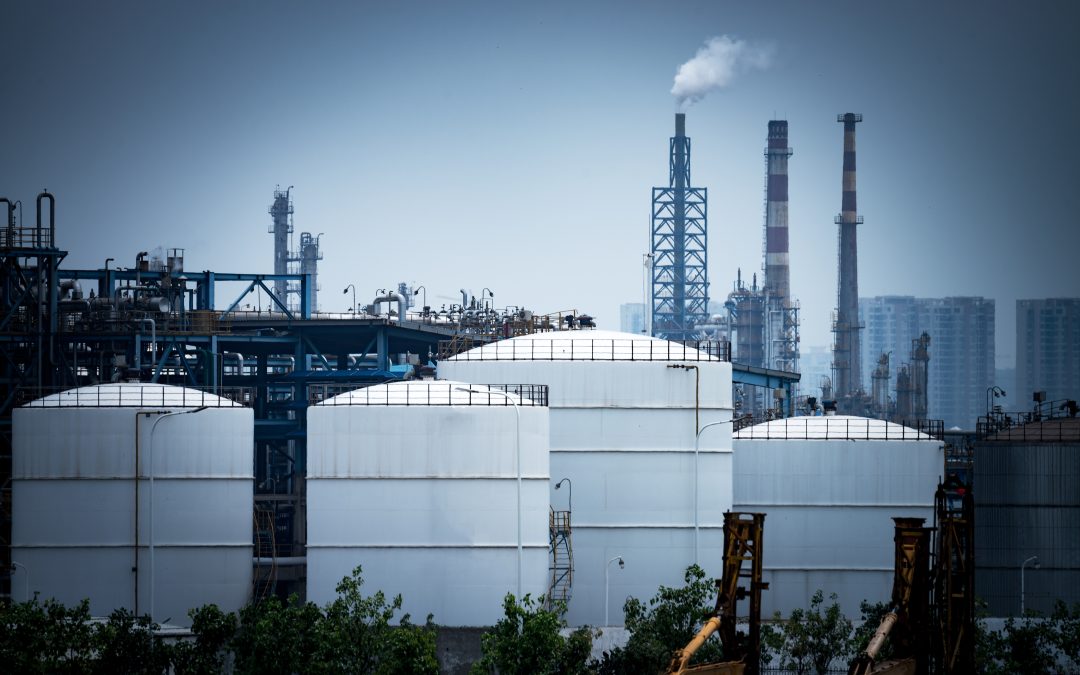The hydrocarbon sector, often criticized for its environmental impact, is not exempt from this transformation and seeks to adapt through sustainable practices. The way in which hydrocarbon storage tanks operate and are managed is a clear example of how even the most traditional industries can move towards a greener future through reuse, recycling, and environmental technology.
The circular economy is an economic model that opposes the linear “take-make-dispose” model, considering the full life cycle of products and services. In the context of hydrocarbon storage, this implies designing facilities and operational practices that minimize waste, maximize fuel efficiency, and promote comprehensive resource recovery at the end of their useful life.
Environmental Impact of Hydrocarbon Tanks
Traditionally, hydrocarbon tanks pose significant environmental challenges, from soil and water pollution due to leaks and spills, to the release of harmful emissions during operation. Cleaning and dismantling procedures also generate hazardous waste that, if not properly managed, exacerbates environmental damage.
Adoption of the Circular Economy
The implementation of a circular economy in this area can manifest in multiple ways:
Design and construction of more efficient tanks: Tanks are being developed with materials that have greater corrosion resistance and advanced leak detection technologies. These improvements not only extend the tanks’ lifespan but also make their operation safer and reduce the likelihood of contaminating incidents.
Improved maintenance and operations: Implementing predictive and preventive maintenance reduces the amount of waste generated, avoiding unplanned spills and emissions. Furthermore, optimizing the filling and emptying process can minimize fuel evaporation and maximize storage efficiency.
Recovery and reuse of tanks: When tanks reach the end of their useful life, instead of dismantling and disposing of the material, there is the possibility of rehabilitating and reusing the metal for creating new tanks or for other industrial purposes.
Waste and emissions management: Capturing emissions and reusing or transforming them into less harmful forms for the environment is crucial. Additionally, there is great potential in managing the byproducts of cleaning and dismantling, always seeking paths of reuse, recycling, and the use of environmental technology.
Tank Storage Reuse and Renovation
Efficient and safe hydrocarbon storage is a cornerstone of the energy sector. However, the environmental impacts resulting from unsustainable practices in tank storage management pose a significant challenge.
In the face of this reality, the reuse and renovation of storage tanks emerge as innovative strategies, aligned with the principles of the circular economy, to promote a more sustainable future.
Below are some:
- Rigorous Inspection and Maintenance: Ensuring a long lifespan of tanks through regular inspections and maintenance to prevent leaks and damage. This reduces the need for constructing new tanks.
- Tank Adaptation for New Uses: Out-of-service storage tanks can be adapted to store different types of fuels or chemicals, including more sustainable ones such as biogas or hydrogen.
Recycling of Materials and Equipment
Metal Recycling: At the end of their useful life, the metallic components of tanks can be recycled to create new products, reducing the demand for new mineral resources.
Recovery of Parts and Equipment: Equipment and parts associated with storage tanks can be recovered, refurbished, and sold for use in other projects or industries.
Integration of Renewable Energies
Solar Energy in Storage Facilities: Installing solar panels on large tanks or surrounding areas to supply energy to site operations, reducing dependence on fossil fuels.
Use of Biofuels: Promoting the storage and distribution of biofuels as a sustainable alternative to traditional fossil fuels.
Innovation and Technology
Development of New Materials: Researching and developing new materials for tanks that are easier to recycle or have a lower environmental footprint.
Advanced Monitoring Technology: Using advanced technologies to monitor tank integrity and prevent spills, contributing to more efficient and sustainable management.
Collaboration and Legislation
Establishment of Regulations: Developing and implementing regulations that promote sustainable practices and the use of recycled materials in tank construction and maintenance.
Sectoral Collaborations: Establishing partnerships between companies, governments, and NGOs to share best practices and foster innovation in sustainability within the sector.
The effective integration of the circular economy into hydrocarbon storage requires a commitment to innovation, investment in new technologies, and collaboration among different stakeholders. Although the challenges are significant, the opportunities for improving sustainability in this sector are considerable, offering long-term environmental and economic benefits.
Challenges and Opportunities
The transition to a circular economy in hydrocarbon storage is not exempt of challenges. It requires significant initial investment, updating regulations, workforce training, and technological adaptation. However, the emerging opportunities are promising. A circular system not only reduces environmental impacts but can also generate long-term economic savings and open up new markets for recycled materials and clean technologies.
Conclusion
As pressure to mitigate climate change intensifies, the hydrocarbon industry cannot afford to continue operating under a linear model. The circular economy offers a sustainable path that aligns this industry with the environmental needs demanded by society. Hydrocarbon tanks, as key links in the energy supply chain, have great potential for transformation towards reuse, recycling, and sustainability practices. The world is watching, and the time to act is now.
For further information, please contact us today.

